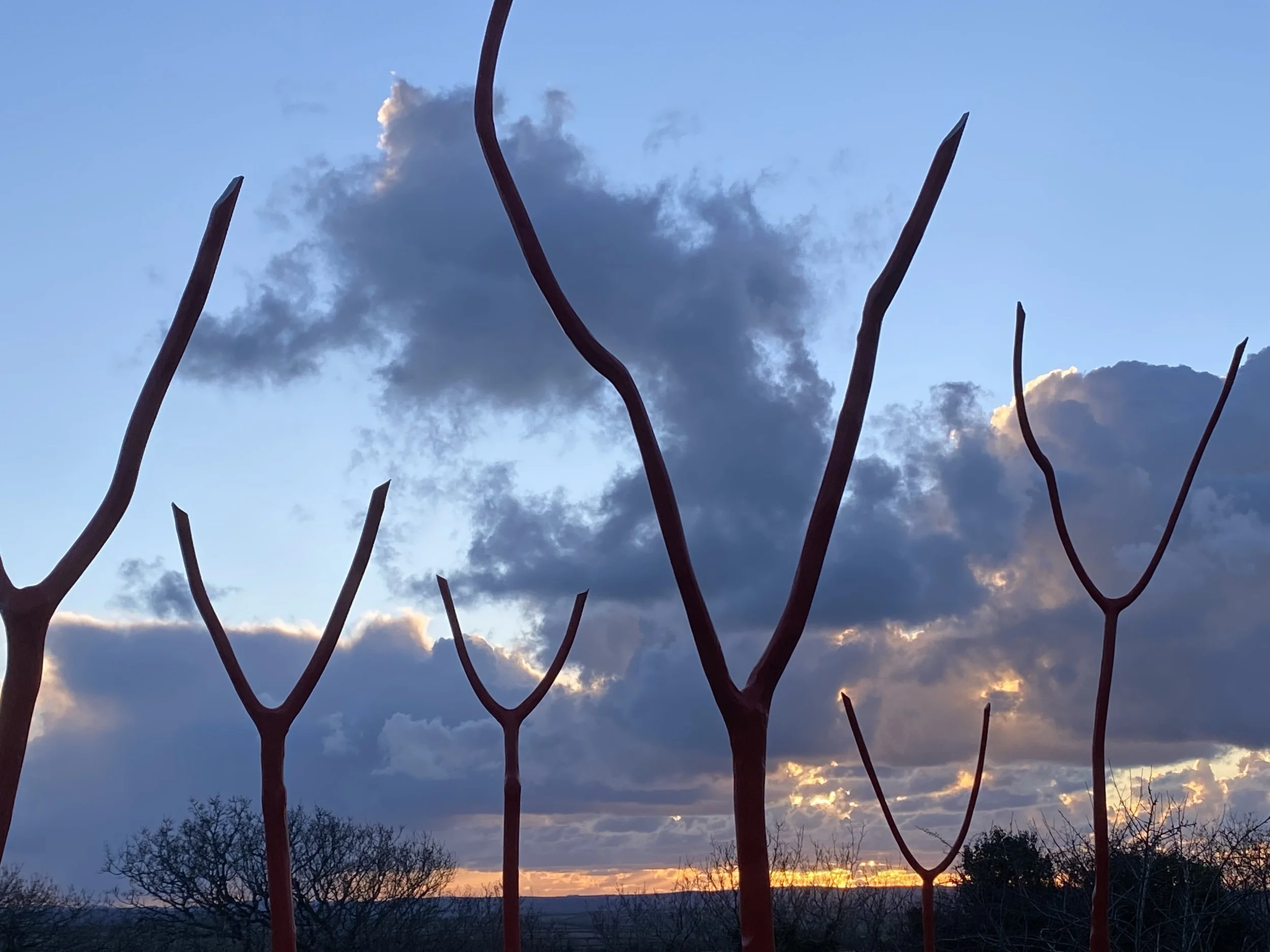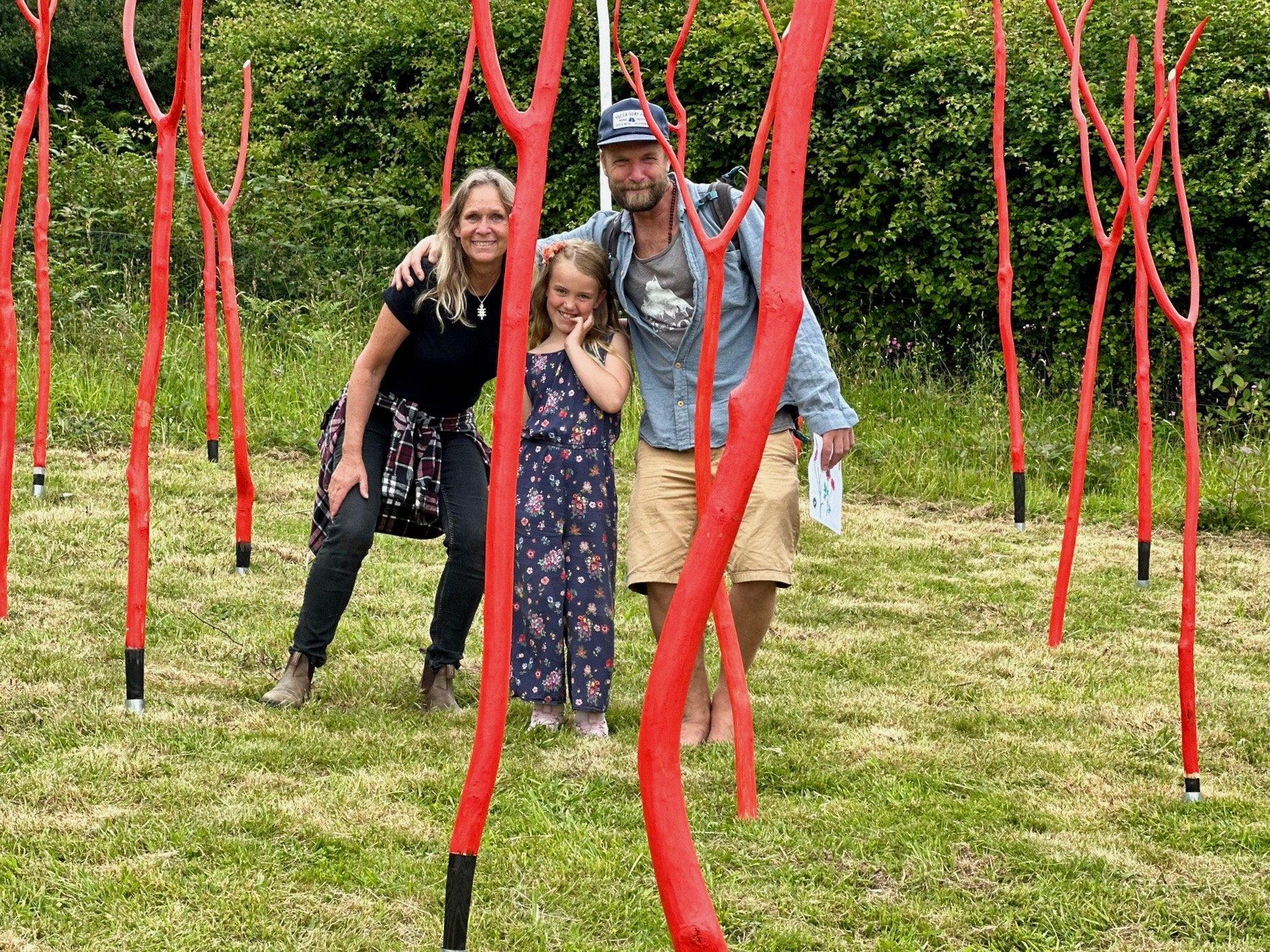THE RED ASH PROJECT
For many years my life has been bound up with Ash trees - growing them from seed, planting them in new woodlands and making yurts, coracles, bowls, baskets and long bows from the wood. Along the way I have learned about our long association with the tree and the part it has played in our stories and culture.
The Ash woodland was planted twenty five years ago in a small field known as Little Bottom next to the River Camel in North Cornwall. It was intended to mark the new millenium and to grow wood for making furniture, yurts, and other bits and pieces. In 2020, following the onset of Ash dieback disease, we thinned out the infected trees and instead of burning them as firewood decided to peel the bark and paint them red.
Since then we have peeled and painted one hundred and three Ash poles and by the time of the Open Day on May 18th 2025, we had returned them to the woods to stand once again on the stumps where they once grew.
Why red?
Years ago, while visiting yurt makers in Kyrgyzstan, I was told that it was traditional to paint the yurt frames red, using earth pigment mixed with ox blood and water. The paint prevented termite attack but it was also a colour that in tribal culture represented fertility and other life giving properties.
Red is often used to signify danger or alarm, and I wanted something that provoked our attention in that way. It is also the colour associated with blood and with life and that sense of vitality was important. Some people who have already visited the woods see in the Red Poles a dance full of movement and joy, others have felt loss and sadness; there is no single interpretation and as the light changes throughout the day, so does the mood.
Initially I imagined the Red Poles standing surrounded by the greys, browns and purples of the woods in winter and the intense greenery of early summer has been a revelation. It is no accident that surgeons wear green scrubs in theatre, the colour green is soothing and brings calm and focus when seen beside the colour red.
Colours mean different things for each of us but I hope that the colour along with the shapes and arrangement of the trees remind us of something more than just their usefulness as a tool handle, or a log for the fire.
Elbows and Knees
In most instances it is not the whole tree that is standing, but a part of the tree - most often a forked branch but sometimes other parts have been selected. The tips of the branches have all been shaped to lean in to eachother and to face up towards the sun - there is a quality in these shapes and all the curves, the branched elbows and knees, and the upifted limbs, that shifts the work from a collection of painted sticks into something that perhaps evokes memories of joy and sadness that may lie just beneath the surface.
Bill Gordon
Participation
Part of the enjoyment and the working process of this project has been working alongside people who have shown up to lend a hand and offer their feedback - they have hauled poles out of the woods, peeled them with drawknife and spokeshave and painted the final coats of bright red paint. This participation has led to many wonderful conversations that have often worked their way into this work. A big thankyou to Bill Gordon and Flo, and to Nick Taylor, Luna Rose, Dom Pierce, and Felix the Wood.
Viewing: The installation can be viewed at any time, from the footpath that runs between Chapel and Coombe Mill along the River Camel on the outskirts of St. Breward in North Cornwall and will be up until the end of July 2025
Location: Grid Reference: OS SX 089767 west and down hill from the Holy Well
what3words: whirlpool.pints.dance
Contact: 07974633320 or hello@thewildcircle.co.uk


























